All Features
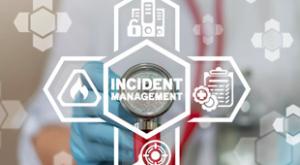
Stephanie Ojeda
Untitled Document
Workplace safety incidents are a key driver of risk in manufacturing organizations. There are the obvious risks to workers, whose ability to make a living directly depends on their employer’s approach to safety.
There are also huge risks to companies themselves, which face…

Mark Graban
I can’t count how many times during the past 20 years I’ve heard executives complain that their people aren’t enthusiastically participating in their lean program. Leaders lament that while the company has spent a small fortune to put everybody through continuous improvement training, hardly…

Andrey Koptelov
In this age of rapid technological innovation, the introduction of sophisticated technologies in various industries has raised complex ethical dilemmas. As businesses strive to achieve financial goals and keep stakeholders happy, they also have to mitigate the adverse effects of technology…

Matthew M. Lowe
Let’s start with a definition of Industry 4.0, keeping in mind that we’re rapidly approaching Industry 5.0. Industry 4.0 is an era marked by enhanced digitization and the increased connectivity of smart technologies. Where Industry 5.0 is more values-driven, it will require the technology of…

Jeffrey Lewis
I’ve observed that ISO management system audits have remained largely unchanged, even after the advent of ISO 19011:2018, the auditing standard that superseded ISO 19011:2011. Auditors are still using clause-based auditing, despite ISO 19011:2018’s direction to take a risk-based approach.…
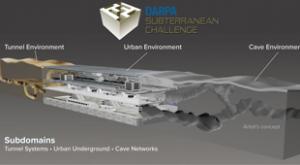
Kurt Kleiner, Knowable Magazine
When a Manhattan parking garage collapsed in April 2023, rescuers were reluctant to stay in the damaged building, fearing further danger. So they used a combination of flying drones and a doglike walking robot to inspect the damage, look for survivors, and make sure the site was safe for human…

Emily Newton
Solving problems goes beyond noticing the symptoms and wanting to resolve them. It’s also necessary to perform a root cause analysis, pinpointing the factors likely to have made an issue occur. It’s only then that leaders can create concrete solutions for lasting changes. However, root cause…

Lindsey Walker
In the quickly changing industrial landscape, firms continue to place a high premium on safety. Innovative approaches to improving industrial safety have been made possible by technological advancements. One particularly revolutionary option is computerized maintenance management system (CMMS)…

Ujjwal Parwal
Risk analytics is a vital component of risk management that uses statistical models, data analysis, and predictive modeling techniques to assess, quantify, and mitigate risks in various domains. This article will delve into the definition of risk analytics, discuss its importance, and explore its…

Etienne Nichols
On Feb. 23, 2022, the U.S. Food and Drug Administration (FDA) released its proposed rule for the new Quality Management System Regulation (QMSR). The proposed QMSR will be the result of aligning the current good manufacturing practice (cGMP) requirements of the FDA’s Quality System Regulation (QSR…

Michael Jarrett
History is filled with tales of courageous and decisive heroes. Individuals like Julius Caesar and Winston Churchill, for example, have led from the front to guide people through adversity and achieve ultimate success. This myth building is especially prominent in business, with stories of…

Kari Miller
Since 2010, citations for insufficient corrective action and preventive action (CAPA) procedures have been at the top of the list of the most common issues within the U.S. Food and Drug Administration (FDA) inspections, particularly for the medical device industry. Issues can occur while…

Etienne Nichols
Amedical device company is expected to deliver innovative, life-changing devices while ensuring compliance and achieving true quality. This task bears loads of responsibility—all of which must be kept and documented within your quality management system (QMS).
A QMS contains everything that…

Hank C. Andersen
Not many years ago, there was a CEO so exceedingly fond of finding the right strategy that he spent all of his money on consultants to tell him what the strategy should be. One day there came two consultants, and they said they could craft the most magnificent strategy imaginable. Not only would it…

Aaron Smith
A successful company can’t run without happy and motivated employees. One way you can achieve that is by improving your employees’ uptime. Uptime refers to your employees’ freedom to pursue personal and occupational growth without the burden of preventable injuries. Here is everything you need to…

Stephanie Ojeda
Design controls are a frequent citation in 483 observations and warning letters from the U.S. Food and Drug Administration (FDA). In fact, the agency has noted a large proportion of past recalls that could have been prevented with design controls.
FDA guidance also makes an explicit link between…
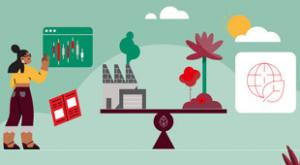
ISO
Net zero is our strongest tool yet against the climate crisis. The transition to net-zero emissions presents a compelling solution that offers not only environmental benefits but also economic, social, and health advantages. Failing to act swiftly and decisively risks catastrophic climate change,…

Sébastien Breteau
Supply chain quality control is a demanding job. Ensuring that products meet specific standards and expectations for safety and customer satisfaction by monitoring and managing the entire supply chain, from raw materials to finished products, must be accomplished consistently and reliably.
At any…
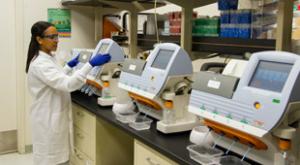
Etienne Nichols
The goal of your MedTech company’s supplier management process should be to ensure a consistent supply of high-quality parts and components that conform to your specifications.
But achieving that goal is easier said than done, and it depends heavily on whether you take a risk-based approach to…

Michael King
Medical companies work in an environment of ever-increasing challenge and complexity. Global regulations continue to evolve with advancements in technology and variations in requirements from country to country. This brings unavoidable technical complexity to daily tasks of quality and regulatory…
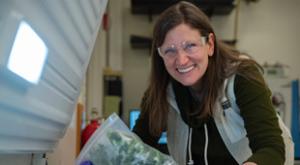
Melissa Phillips
The levels of contaminants in our food supply are, generally, decreasing. That’s the good news.
But we still need to measure those contaminants and make sure our food is safe. And measuring tiny things (and big things) is what we do best here at NIST.
In our food safety program, we’re studying all…
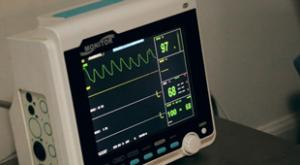
Etienne Nichols
Medical device companies must have established risk management processes that comply with ISO 14971. It doesn’t matter whether you’re developing medical devices in the U.S., EU, Canada, or elsewhere. Every international regulatory agency you’ve ever heard of accepts ISO 14971.
ISO 14971 is a good…

Jake Mazulewicz
Wildland firefighters. Air traffic controllers. Flight deck crews of aircraft carriers. Operators of nuclear power plants and the national bulk electric grid. These are among the safest and most reliable work teams in the world. And they don’t try to eliminate all errors and surprises.
Decades of…

Harish Jose
I’m looking at a topic in statistics. I’ve had a lot of feedback on one of my earlier posts on OC curves and how one can use them to generate a reliability/confidence statement based on sample size (n), and rejects (c). I provided an Excel spreadsheet that calculates the reliability/confidence…

Martin Cottam
It’s tempting to attribute the increased profile now given to occupational health and safety (OH&S) to the Covid-19 pandemic. But while in many organizations the pandemic shone a spotlight on OH&S management, there are other issues that will keep OH&S at the fore throughout the next…